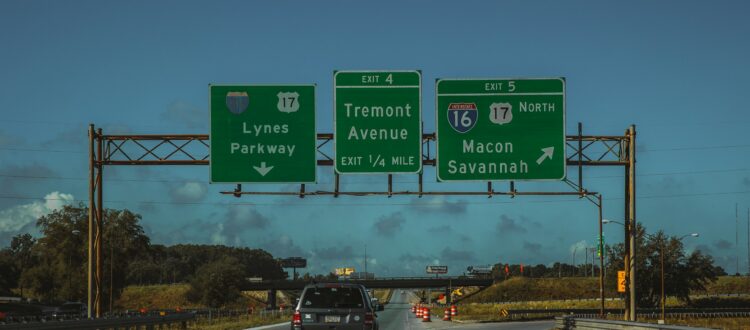Highway and expressway guide signs play a vital role in guiding motorists through the intricate network of roads and highways. These signs are designed to provide essential information to drivers, such as upcoming exits, rest areas, and points of interest. They feature clear and concise symbols and text, allowing drivers to make informed decisions about their route.
Whether it’s navigating through a bustling city or embarking on a cross-country journey, these guide signs serve as a vital tool for ensuring safe and efficient travel for all road users. Understanding the significance and meaning behind these signs can greatly enhance the driving experience and contribute to overall road safety.
What Do Highway and Expressway Guide Signs Mean?
Highway and expressway guide signs convey a wealth of information to drivers, serving as a navigational aid to help them reach their destinations safely and efficiently. These signs often indicate upcoming exits, distances to specific destinations, locations of rest areas, and points of interest. They also provide vital information about lane usage, speed limits, and potential hazards.
By understanding the meaning behind these signs, drivers can make informed decisions about lane changes, upcoming maneuvers, and necessary exits, ultimately contributing to smoother traffic flow and enhanced road safety. The clear and standardized symbols and text on these signs ensure that drivers can quickly interpret and respond to the information provided, making for a more predictable and organized driving experience.
Importance of Highway and Expressway Guide Signs
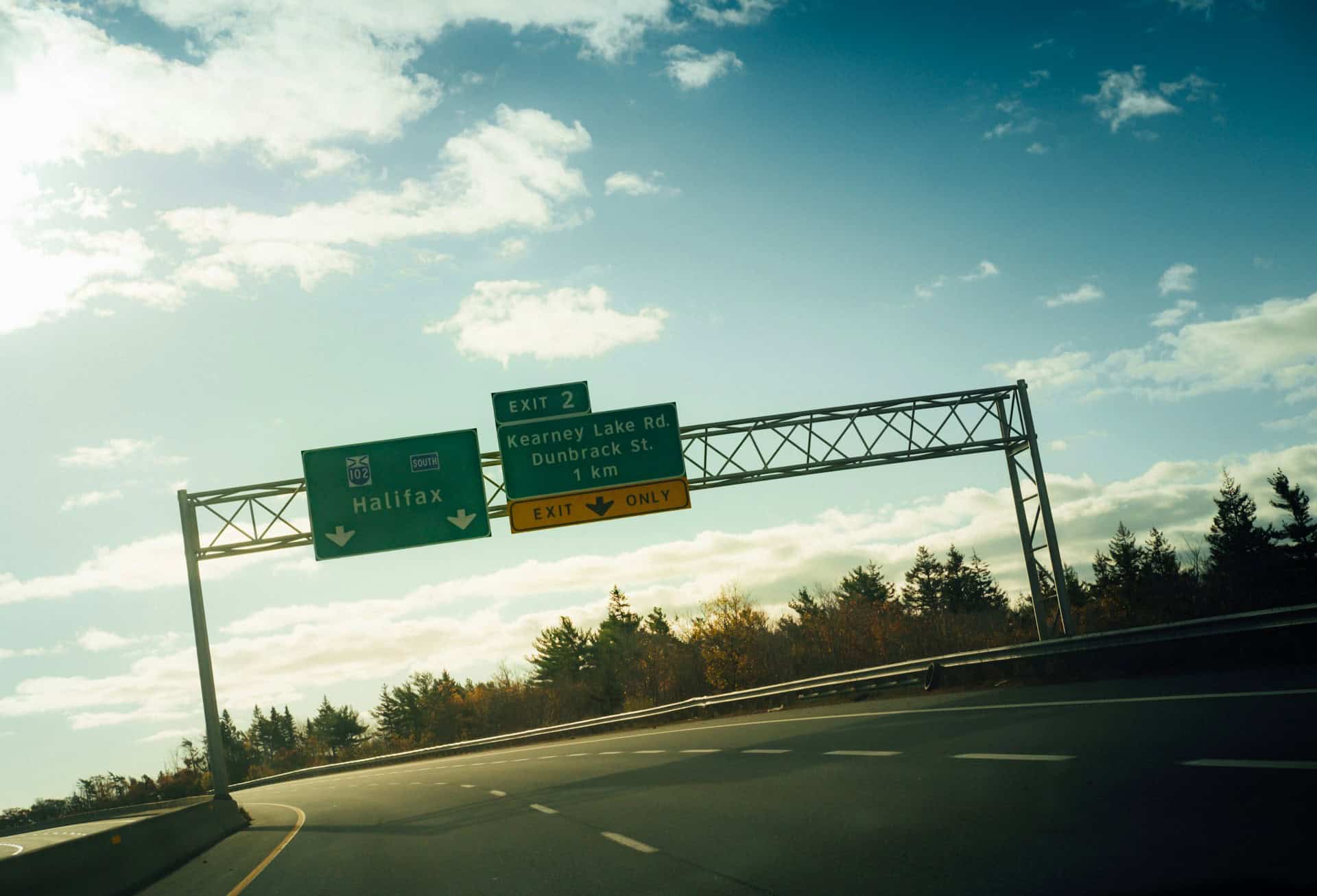 Their importance cannot be overstated, as they play a pivotal role in ensuring the safety and efficiency of road travel. These signs provide vital information to drivers, allowing them to navigate unfamiliar routes with ease and confidence. By indicating upcoming exits, distances to key destinations, and potential hazards, guide signs empower drivers to make timely and informed decisions, reducing the likelihood of last-minute lane changes and abrupt maneuvers.
Their importance cannot be overstated, as they play a pivotal role in ensuring the safety and efficiency of road travel. These signs provide vital information to drivers, allowing them to navigate unfamiliar routes with ease and confidence. By indicating upcoming exits, distances to key destinations, and potential hazards, guide signs empower drivers to make timely and informed decisions, reducing the likelihood of last-minute lane changes and abrupt maneuvers.
Furthermore, these signs contribute to overall traffic management, helping to maintain a smooth flow of vehicles and minimize congestion. In essence, highway and expressway guide signs are indispensable tools that enhance road safety, facilitate efficient travel, and promote a more seamless driving experience for all motorists.
What Material are Highway and Expressway Guide Signs Made of?
They are made from durable and weather-resistant materials to withstand the rigors of outdoor exposure. Common materials used for these signs include aluminum, which offers excellent corrosion resistance and longevity, making it well-suited for outdoor applications. Reflective sheeting is applied to the sign surfaces to enhance visibility, especially during nighttime or low-light conditions, improving overall safety for drivers. Some signs may also incorporate steel framing to provide added strength and structural integrity, ensuring that they remain securely in place, even in challenging environmental conditions.
What Information Do Highway and Expressway Guide Signs Provide?
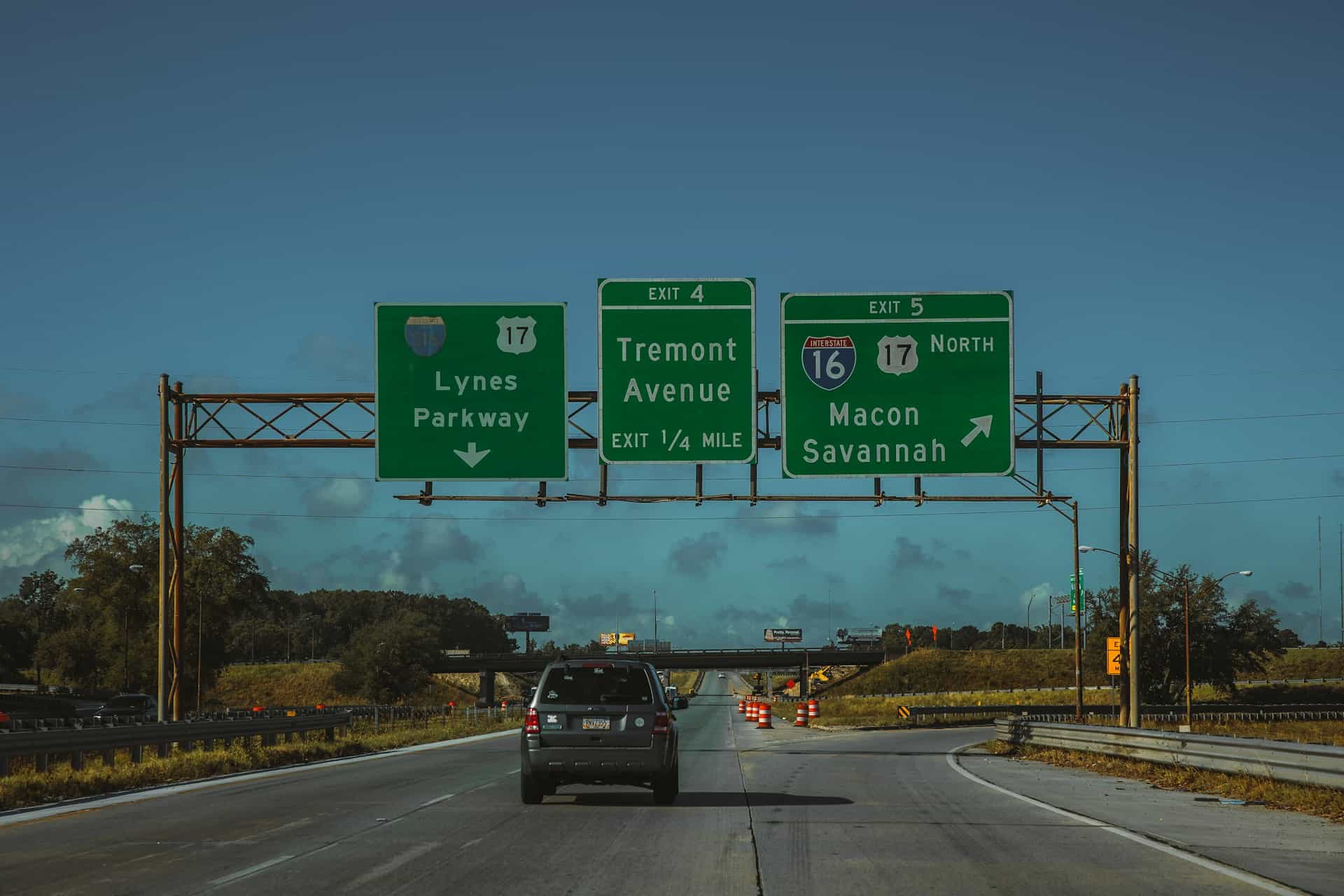 They provide a wealth of essential information to motorists, serving as a navigational aid to facilitate safe and efficient travel. These signs typically convey details about upcoming exits, distances to specific destinations, locations of rest areas, points of interest, and service facilities such as gas stations and restaurants.
They provide a wealth of essential information to motorists, serving as a navigational aid to facilitate safe and efficient travel. These signs typically convey details about upcoming exits, distances to specific destinations, locations of rest areas, points of interest, and service facilities such as gas stations and restaurants.
They also offer crucial guidance on lane usage, speed limits, and potential hazards, empowering drivers to make informed decisions and navigate their routes with confidence. By presenting clear and standardized symbols and text, guide signs help drivers anticipate upcoming maneuvers, respond to changing road conditions, and ultimately contribute to smoother traffic flow and enhanced road safety.
Do Guide Signs Provide Information about Expressway Exits?
Guide signs on expressways play a key role in providing essential information about exits to motorists. These signs typically display clear and concise details about upcoming exits, including the exit number, the destinations accessible from the exit, and any services available at that exit, such as gas stations, restaurants, or rest areas. By presenting this information in a standardized and easily recognizable format, guide signs enable drivers to plan their lane changes and maneuvers well in advance, contributing to smoother traffic flow and safer navigation.
What are the Shape and Colors of Highway and Expressway Guide Signs?
The shape and colors of highway and expressway guide signs are designed to convey specific information to drivers in a clear and standardized manner. Highway guide signs typically have a rectangular shape, with some variations for specific types of information, such as interstate road signs, which are shaped as shields.
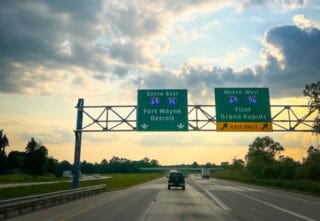 These signs commonly feature a green background with white lettering and borders (borders are optional), providing a high level of contrast for improved visibility. The use of standardized shapes and colors ensures that drivers can quickly recognize and interpret the information presented, contributing to safer and more efficient navigation on the road.
These signs commonly feature a green background with white lettering and borders (borders are optional), providing a high level of contrast for improved visibility. The use of standardized shapes and colors ensures that drivers can quickly recognize and interpret the information presented, contributing to safer and more efficient navigation on the road.
Expressway guide signs also adhere to standardized shapes and colors to convey crucial information to motorists. These signs often have a rectangular shape, with certain variations for specific types of information such as exit signs, which are typically shaped as rectangles with a green background.
The colors used on expressway guide signs are carefully chosen to provide clear visual cues to drivers; for example, green is commonly used to indicate directional information such as exits or distances to upcoming towns or cities, while blue is often employed for services and facilities. Brown signs with white pictograms and lettering let motorists know that there’s a trailhead or other location/item of interest (such as historical sites) at the next exit. By employing consistent shapes and colors, expressway guide signs facilitate rapid comprehension of vital information, contributing to enhanced safety and navigation for drivers.
Is Complying to the MUTCD Standard Mandatory?
Compliance with the Manual on Uniform Traffic Control Devices (MUTCD) is mandatory for highway and expressway guide signs within the United States. The MUTCD, which is published by the Federal Highway Administration (FHWA), sets the national standards for all traffic control devices, including road markings, highway signs, and traffic signals. These standards are legally binding and must be followed by all states and territories to ensure consistency and to promote safety and efficiency on all public roads.
The MUTCD’s guidelines dictate aspects such as sign design, placement, and maintenance, ensuring that drivers encounter a uniform system of navigation aids regardless of where they are in the country. Failure to comply with the MUTCD can lead to a reduction in federal funding for state and local transportation departments, making adherence to its standards not only a matter of legal responsibility but also of financial prudence.
Are Highway and Expressway Guide Signs Required to be Illuminated or Retro-reflective?
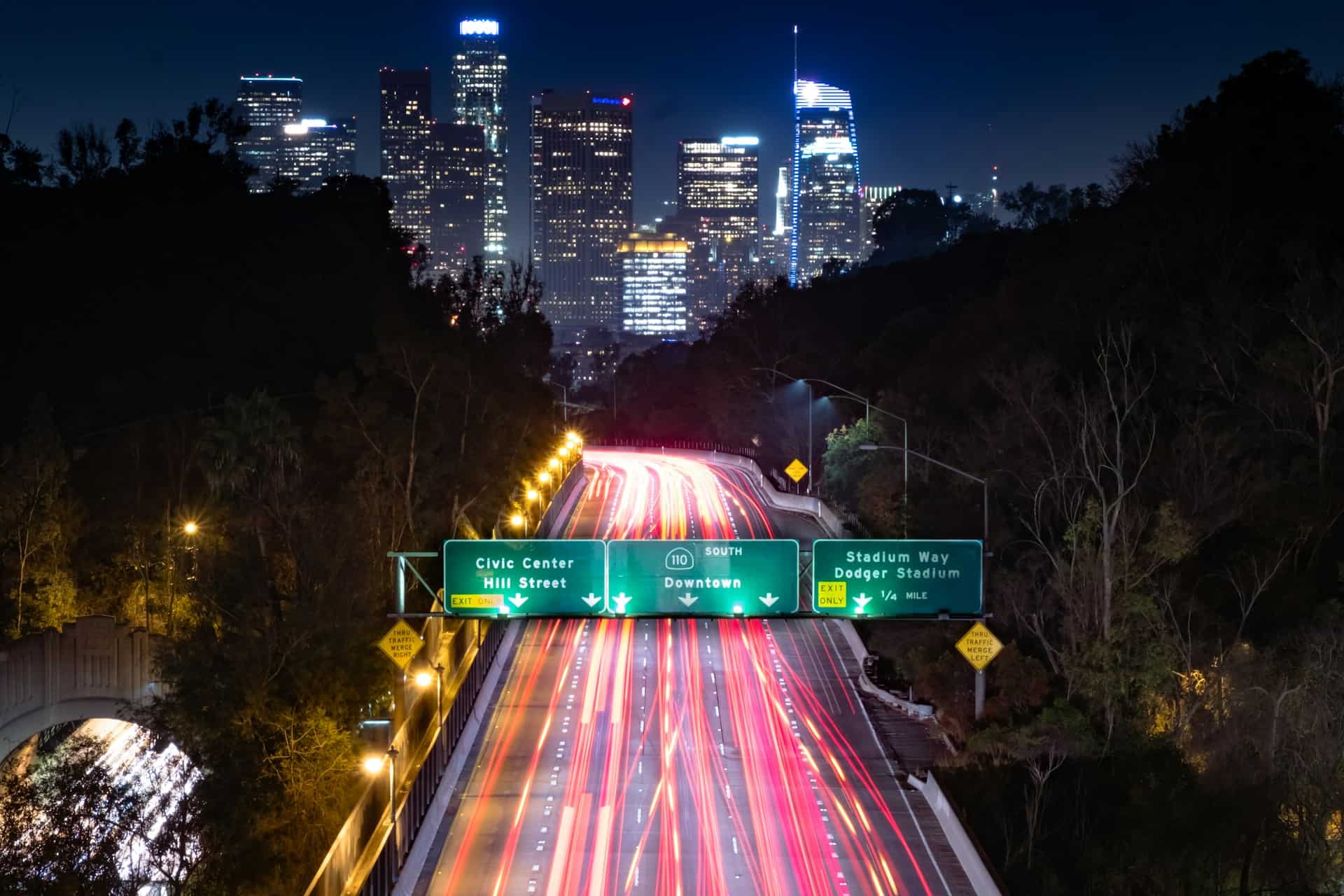 They are required to be visible at all times, which means they must be either illuminated or retro-reflective. This requirement is stipulated by the Manual on Uniform Traffic Control Devices (MUTCD), which mandates that signs must be designed to be seen and understood both at night and during the day. Retro-reflective signs are sheeted with adhesive-backed sheeting that bounce light from vehicle headlights back towards the driver, making the sign appear to glow and thus ensuring its visibility.
They are required to be visible at all times, which means they must be either illuminated or retro-reflective. This requirement is stipulated by the Manual on Uniform Traffic Control Devices (MUTCD), which mandates that signs must be designed to be seen and understood both at night and during the day. Retro-reflective signs are sheeted with adhesive-backed sheeting that bounce light from vehicle headlights back towards the driver, making the sign appear to glow and thus ensuring its visibility.
Illuminated signs, on the other hand, use an external or internal light source to ensure the sign is readable in low-light conditions. The choice between illumination and retro-reflectivity often depends on factors such as the sign’s location, the amount of ambient light, and the jurisdiction’s policies and budget. However, the underlying goal is the same: to ensure that the signs convey their information effectively at all times for the safety and guidance of road users.
Guide Signs on Conventional Highways Vs. Expressways
Guide signs on conventional highways and expressways serve distinct purposes and are tailored to the specific needs of each type of roadway. On conventional highways, guide signs are designed to provide information about upcoming intersections, exits, points of interest, and services. These signs are typically placed at strategic locations to assist drivers in making informed decisions about their route, including upcoming turns and available amenities.
In contrast, guide signs on expressways are focused on providing advance notice of exits, interchanges, and major destinations. They often feature larger and more prominent lettering to accommodate higher speeds and longer distances between exits. Also, expressway guide signs may incorporate lane-use symbols to assist drivers in navigating complex interchanges and lane changes.
Conclusion
Highway and expressway guide signs are vital in facilitating safe and efficient navigation for drivers. The standardized shapes, colors, and designs of these signs, in compliance with the Manual on Uniform Traffic Control Devices (MUTCD), ensure clear and consistent communication of vital information to motorists. Whether on conventional highways or expressways, guide signs are strategically placed to provide advance notice of intersections, exits, services, and major destinations, contributing to smoother traffic flow and enhanced driver safety.
Popular Posts:

